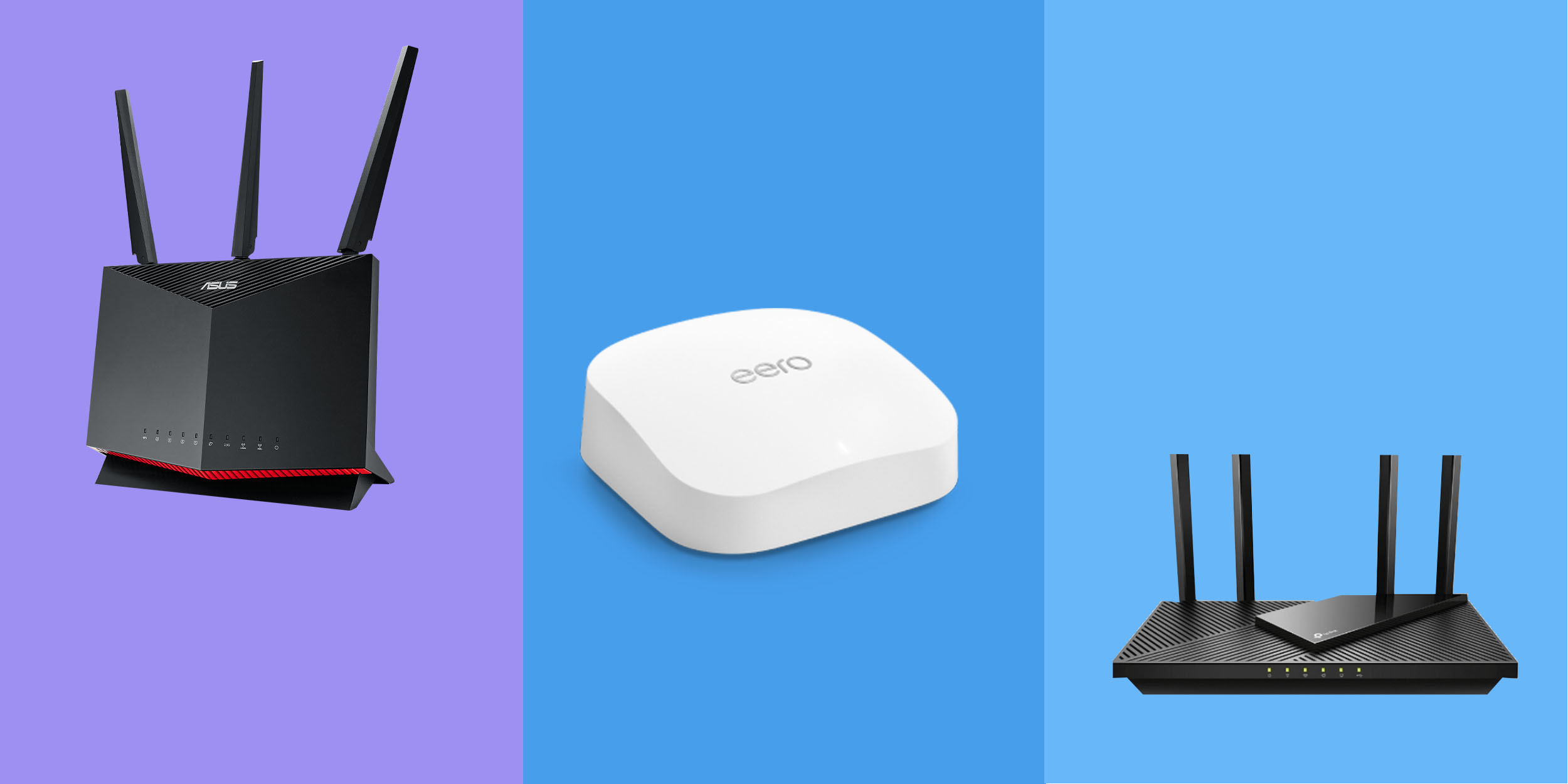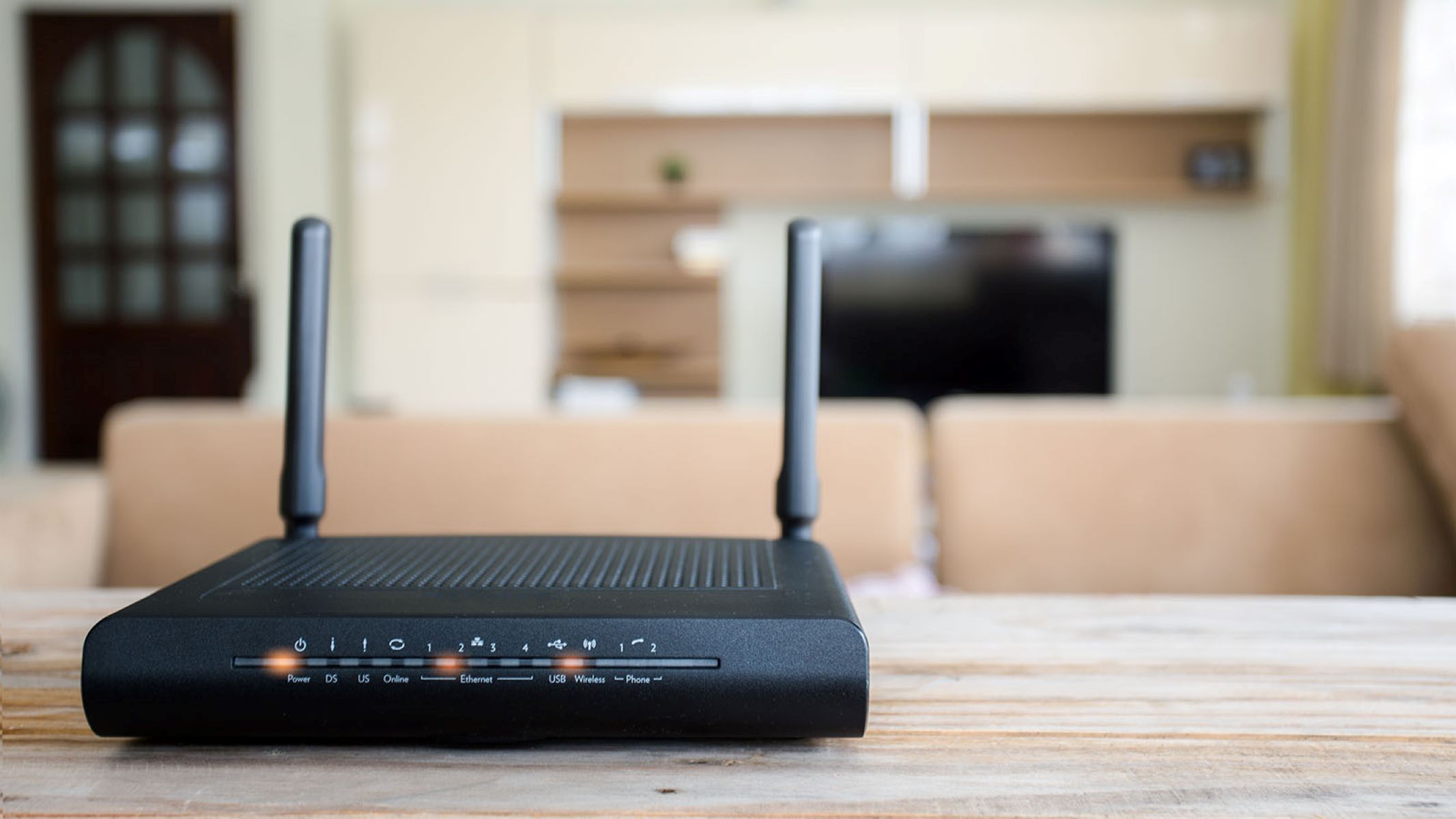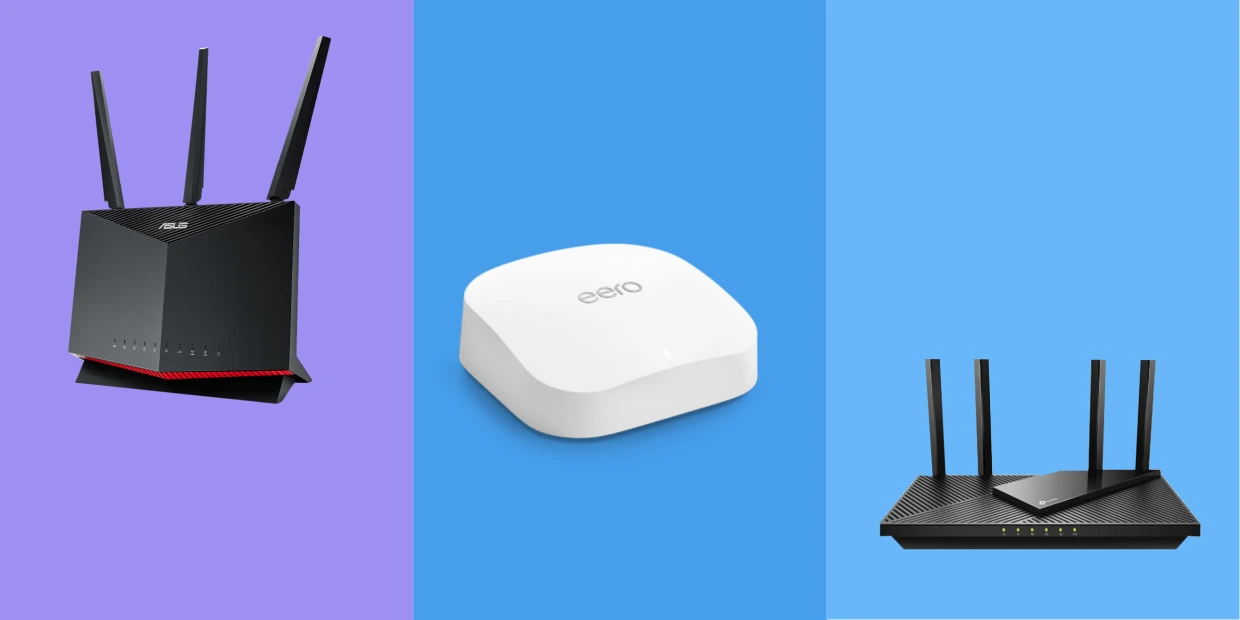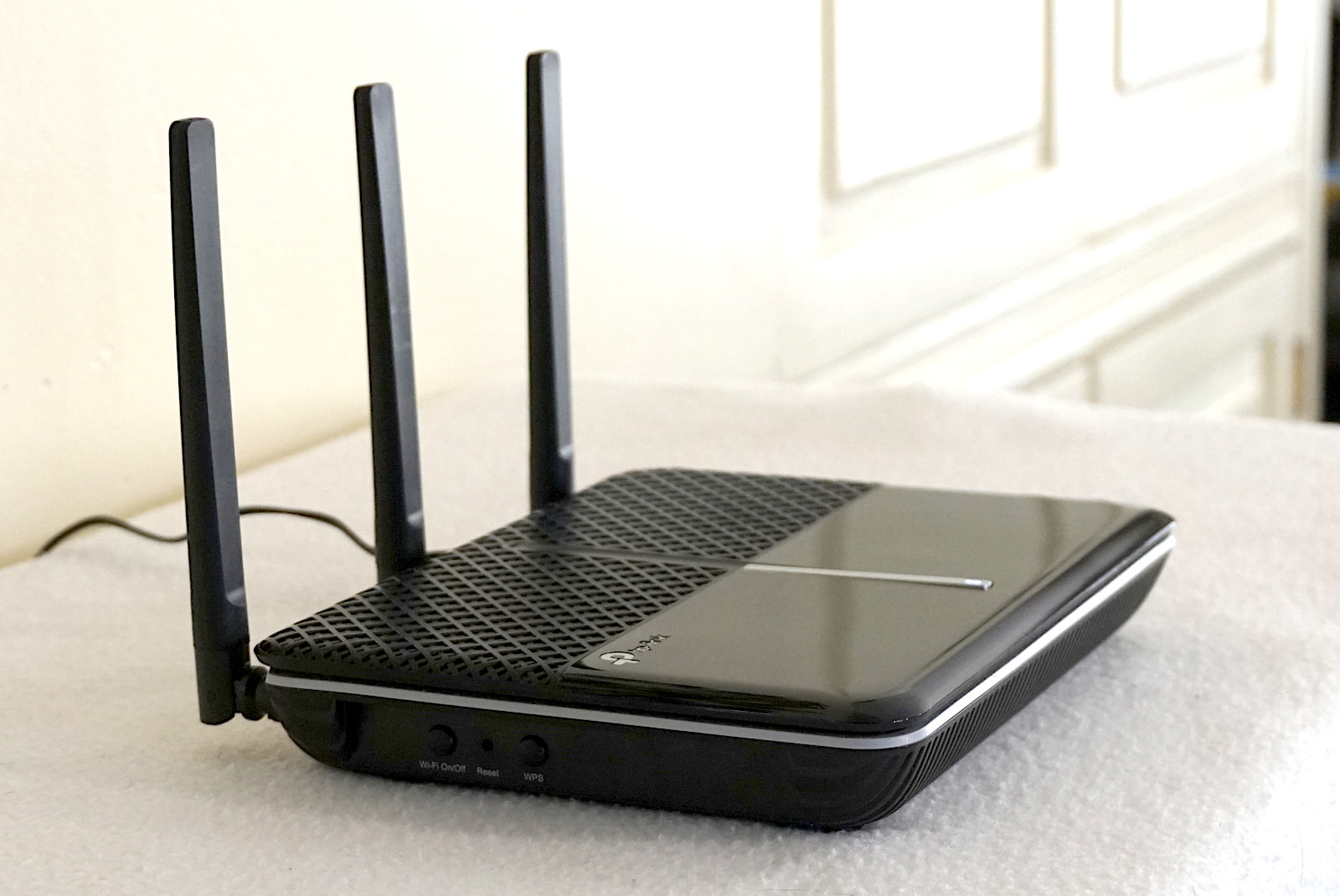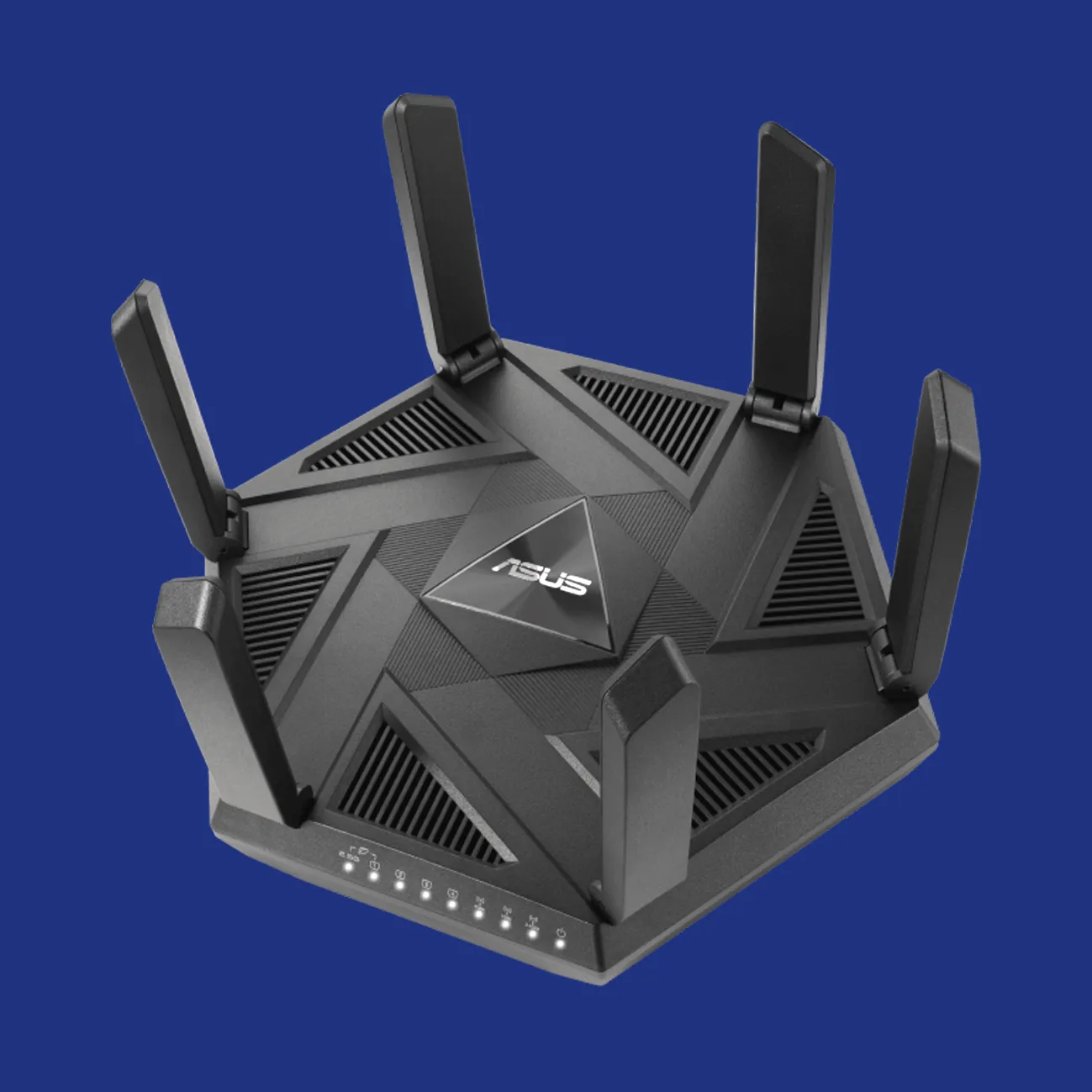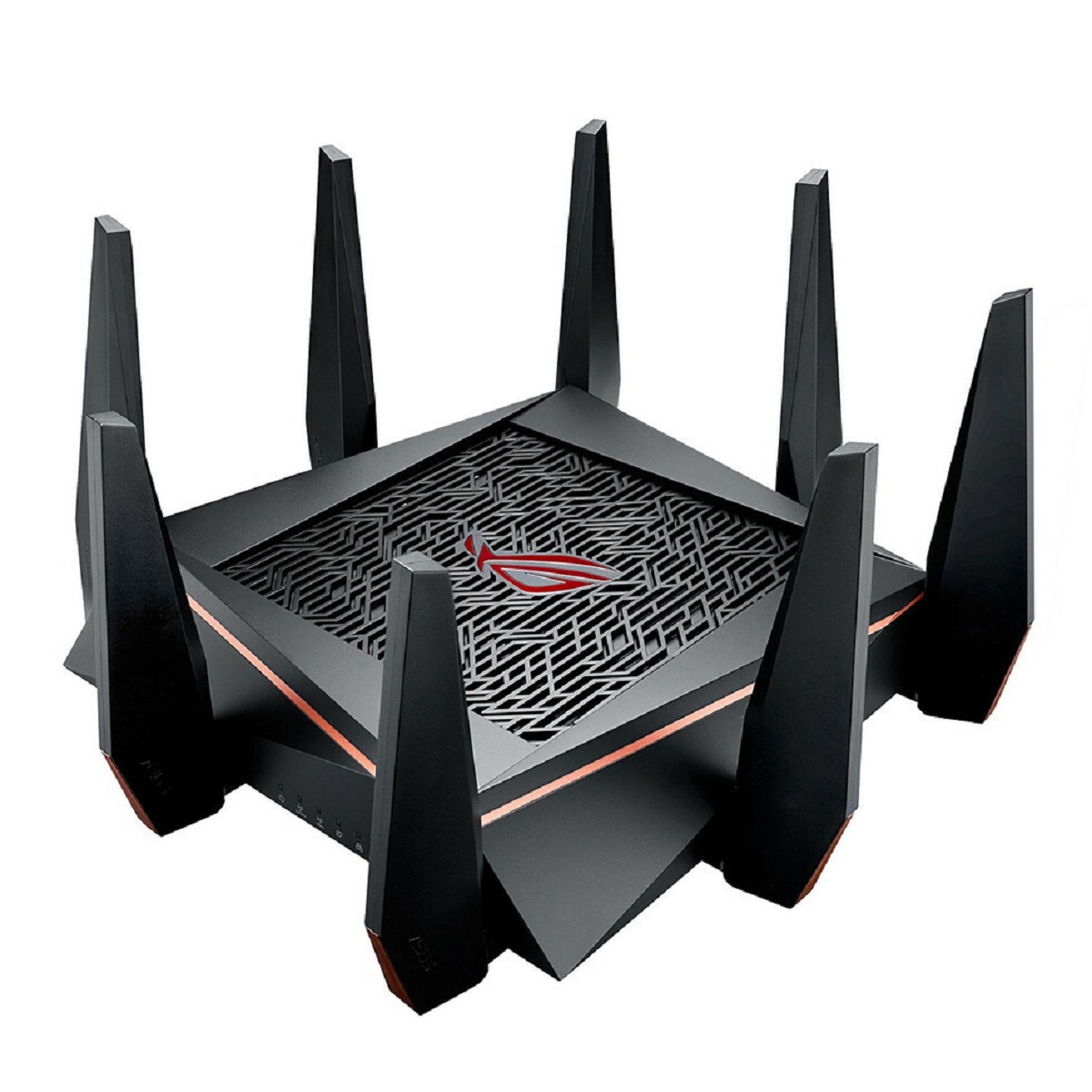Introduction
When it comes to networking and connecting multiple devices in a local area network (LAN) or wide area network (WAN), routers play a crucial role. These small yet powerful devices ensure that data packets are efficiently routed between networks, enabling devices to communicate with each other. Whether it’s accessing the internet, sending emails, or streaming media, routers are at the heart of every networked activity.
In this article, we will delve into the fascinating world of routers and explore how they work. We’ll uncover the key components that make a router function, understand the fundamentals of routing tables and IP addressing, and dive into the various types of routers available in the market.
If you’ve ever wondered how your devices are able to seamlessly connect to the internet, or if you’re looking to set up your own home network, understanding the basic principles of router functionality is essential. So, let’s embark on this journey to unravel the mysteries of routers and discover how these devices serve as the backbone of modern networking.
What is a Router?
A router is a networking device that acts as a central hub for data packets to be directed from one network to another. It plays a critical role in the communication process between devices within a network and helps facilitate the sharing of data and resources. Essentially, a router serves as a traffic controller, intelligently managing the flow of information between devices connected to different networks.
One of the primary functions of a router is to determine the best path for data packets to travel from the source device to the destination device. It achieves this by analyzing the destination IP address of each packet and consulting its routing table to make a decision based on predefined rules and protocols.
Unlike switches or hubs which operate at the data link layer of the network, routers operate at the network layer. This means that they are capable of transmitting data beyond the boundaries of a LAN and enable communication between different networks, such as connecting a home network to the internet. Routers are crucial in breaking down network boundaries and facilitating seamless data transmission across various subnets, LANs, and even across the internet.
Another important role of a router is to perform network address translation (NAT). NAT allows multiple devices within a private network to share a single public IP address when accessing the internet. This process masks the internal IP addresses of devices and helps protect the network from potential security threats.
In summary, a router is a vital networking device that connects networks together, directs data packets based on their destination IP address, enables communication beyond a LAN, and provides network address translation capabilities. Without routers, the interconnectedness and communication that we experience in today’s digital age would not be possible.
How Does a Router Work?
To understand how a router works, it’s important to grasp the concept of routing. Routing refers to the process of forwarding data packets from a source device to a destination device across different networks. This is achieved through a series of interconnected routers that work together to ensure efficient packet delivery.
When a device within a network wants to send data to another device in a different network, the router plays a crucial role in directing the data packets. The process starts with the source device encapsulating the data into packets and attaching the destination IP address to each packet. The router receives these packets and begins the routing process.
The routing process involves the router consulting its routing table, which contains information about the available network paths and their associated metrics. Each router in the network maintains a routing table that helps it make intelligent routing decisions. The router compares the destination IP address of the packet with the entries in its routing table to determine the best path for the packet to reach its destination.
Once the router has identified the next hop for the packet, it uses a combination of routing protocols, such as OSPF (Open Shortest Path First) or BGP (Border Gateway Protocol), to exchange routing information with neighboring routers. This ensures that all routers in the network have up-to-date routing information and can make informed decisions about packet forwarding.
When the packet reaches the next router, the process is repeated until the packet reaches the final destination. Each router along the path examines the destination IP address, consults its routing table, and forwards the packet to the next hop until it reaches the correct network.
In addition to routing packets, routers also perform other essential functions. They maintain network security by implementing firewalls and access control lists to filter unwanted traffic. Routers also support network address translation (NAT) to allow multiple devices to share a single public IP address.
In summary, routers work by receiving data packets, examining the destination IP address, consulting the routing table, and forwarding the packets to the appropriate next hop. Through a combination of routing protocols and intelligent decision-making processes, routers ensure that data is efficiently routed across different networks, enabling seamless communication between devices.
Anatomy of a Router
To understand the inner workings of a router, let’s take a closer look at its key components and their functions. While router designs may vary depending on the manufacturer and model, most routers share several common elements.
One of the primary components of a router is the central processing unit (CPU). The CPU is responsible for executing the router’s operating system, managing the router’s configuration, and processing data packets. It handles tasks such as packet forwarding, routing table calculations, and network protocols.
Another crucial component is the RAM (Random Access Memory). RAM provides the router with temporary storage capacity, allowing it to quickly process incoming data packets and hold routing tables, ARP (Address Resolution Protocol) tables, and other essential information.
The router also contains multiple network interfaces, typically in the form of Ethernet ports. These interfaces serve as the connection points for devices within the network. Routers may have different types of interfaces, such as fast Ethernet, Gigabit Ethernet, or even wireless interfaces for connecting to devices wirelessly.
One of the most critical components of a router is the routing table. The routing table contains the information necessary for the router to make intelligent routing decisions. It lists network destinations, next hop addresses, and associated metrics that help the router determine the best path for packets to reach their destinations. The routing table is regularly updated through routing protocols or manual configuration.
Additionally, routers often include specialized hardware components such as ASICs (Application-Specific Integrated Circuits) or NPUs (Network Processing Units). These components are designed to speed up packet processing and perform functions like packet filtering, routing calculations, and queuing.
The firmware or operating system running on the router is another crucial aspect. It provides the necessary functionality and protocols for the router to operate within a network. Popular router operating systems include Cisco’s IOS (Internetwork Operating System), Juniper’s Junos, and OpenWrt, among others.
Lastly, routers often include features like power adapters, cooling fans, and LEDs for status indication. These features ensure the router remains operational, keeps temperature within acceptable limits, and allows users to monitor the router’s status at a glance.
Understanding the anatomy of a router is essential for troubleshooting, configuration, and optimizing network performance. By knowing the functions and interactions of these components, network administrators can effectively manage and maintain routers to ensure efficient data routing within their networks.
Routing Table
The routing table is a critical component of a router that plays a fundamental role in the routing process. It is essentially a database of network routes that the router refers to when making decisions on how to forward data packets to their destinations.
The routing table contains entries that consist of destination network addresses, next-hop addresses, and associated metrics or costs. This information allows the router to determine the most efficient path for sending packets to the desired network.
When a router receives a packet, it looks up the destination IP address in its routing table. Through a process called longest prefix matching, the router searches for the most specific network address that matches the destination IP address. Once a match is found, the router determines the corresponding next-hop address for forwarding the packet.
The next-hop address is the IP address of the router that the current router should send the packet to in order to reach the destination network. It is important to note that the next-hop address might not be the final destination; rather, it is the address of the next router on the path towards the ultimate destination.
Each entry in the routing table also includes a metric or cost associated with the route. The metric represents a value that indicates the desirability of using a particular route. It can be based on factors like network bandwidth, latency, load, or manually assigned values. Routers use these metrics to determine the most efficient path for packet transmission. A lower metric generally indicates a better route.
The routing table is not static; it is dynamic and can change as network conditions or topology changes. Routers use various routing protocols, such as OSPF (Open Shortest Path First) or RIP (Routing Information Protocol), to exchange routing information and keep their routing tables up to date. These protocols allow routers to share information about network changes, metrics, and reachability, ensuring that routers can make informed routing decisions.
Network administrators can also manually configure a router’s routing table by adding static routes. Static routes provide explicit instructions to the router on how to reach specific networks. They are useful in situations where the network topology is stable and changes are infrequent.
In summary, the routing table is a dynamic database within a router that contains information on network routes, next-hop addresses, and associated metrics. It enables routers to make intelligent decisions about how to forward data packets to their destinations. By continuously updating and referencing the routing table, routers can efficiently navigate through networks and ensure optimal data routing.
IP Addressing and Routing
IP addressing and routing are fundamental concepts in networking that work together to facilitate communication between devices in different networks. IP addressing is the method by which devices on a network are assigned unique identifiers, known as IP addresses, enabling them to send and receive data.
IP addresses are numerical values assigned to each device connected to a network. They consist of two parts: the network portion and the host portion. The network portion identifies the network to which the device belongs, while the host portion identifies the specific device within that network.
When a device wants to send data to another device in a different network, it uses the destination IP address to determine the appropriate route. This is where routing comes into play. Routers analyze the destination IP address of each packet and consult their routing tables to determine the best next-hop router for forwarding the packet.
The routing process involves breaking down the destination IP address into its network and host portions. The router compares the network portion against the entries in its routing table to find a match. If a match is found, the router forwards the packet to the corresponding next-hop router. If no match is found, the router will use its default route to forward the packet, which is typically the gateway to the internet.
To ensure that data is routed correctly, unique IP addresses must be assigned to each device on the network. IP addresses are typically assigned dynamically through the use of protocols such as DHCP (Dynamic Host Configuration Protocol). DHCP servers automatically assign IP addresses to devices when they connect to the network, ensuring efficient management of IP address allocation.
Additionally, routers use subnet masks to determine the network portion of an IP address. The subnet mask indicates which bits in the IP address represent the network and host portions. By comparing the subnet mask with the IP address, the router can accurately identify the network to which the device belongs.
The IPv4 (Internet Protocol version 4) is the most common IP addressing scheme used today. It uses a 32-bit address composed of four octets separated by periods (e.g., 192.168.0.1). However, with the increasing number of devices connected to the internet, the transition to IPv6 (Internet Protocol version 6) is underway. IPv6 utilizes a 128-bit address, represented in hexadecimal format, to accommodate the growing demand for unique IP addresses.
In summary, IP addressing and routing are fundamental components of networking. IP addressing assigns unique identifiers to devices, while routing ensures that data packets are directed to the correct destination. By properly configuring IP addresses and routing tables, networks can efficiently and accurately deliver data across multiple networks.
Types of Routers
Routers come in various types, each designed to meet specific networking needs and environments. Understanding the different types of routers can help in selecting the right one for a particular network setup. Let’s explore some common types of routers:
1. Home Routers: Home routers are designed for residential use, providing internet connectivity and network services to devices within a home network. They typically include features such as built-in Wi-Fi, firewall protection, and network address translation (NAT). These routers are user-friendly and often come with easy setup options for non-technical users.
2. Wireless Routers: Wireless routers are equipped with wireless access points, enabling wireless connectivity for devices within a network. They are commonly used in homes, small businesses, and public spaces to provide Wi-Fi access. Wireless routers support various standards, such as 802.11ac or 802.11ax, offering different speeds and ranges.
3. Core Routers: Core routers are high-performance routers designed for large-scale networks. They sit at the core of an Internet Service Provider’s (ISP) network, handling a significant volume of data traffic and routing it between different networks. Core routers provide fast and reliable routing capabilities to ensure seamless connectivity for large numbers of users.
4. Edge Routers: Edge routers are deployed at the edge of a network and connect it to external networks, such as the internet or other ISPs. They handle incoming and outgoing data traffic, performing functions such as packet filtering and load balancing. Edge routers play a crucial role in ensuring secure and efficient data transfer between networks.
5. Branch Routers: Branch routers are used in branch offices or remote locations of an organization. They provide connectivity and network services for these remote sites. Branch routers often have features like VPN (Virtual Private Network) support and security measures to extend the organization’s network securely to these remote locations.
6. Virtual Routers: Virtual routers are software-based routers that run on virtual machines or cloud platforms. They provide routing functionalities within virtualized environments. Virtual routers offer flexibility and scalability, allowing virtual networks to be created and managed without physical hardware dependencies.
It’s worth noting that some routers may serve multiple purposes and have features that overlap. For example, a wireless router can also be used as a home router. When selecting a router, it’s essential to consider the specific requirements of the network, such as the number of devices, desired speed, and network size.
In summary, routers come in various types and serve different purposes, ranging from home routers for residential networks to core routers for ISP networks. Understanding the different types of routers can help in choosing an appropriate router to meet the specific needs of a network.
Router Features
Routers are not just simple devices that forward data packets; they also come with a range of features that enhance network connectivity, security, and management. Understanding these features can help in selecting a router that suits specific network requirements. Let’s explore some common router features:
1. Quality of Service (QoS): QoS allows routers to prioritize certain types of network traffic over others, ensuring that critical applications such as voice or video streaming receive sufficient bandwidth and have minimal latency. QoS settings allow administrators to allocate network resources based on the needs of different applications or users.
2. Firewall and Security: Routers often include built-in firewalls that protect the network from unauthorized access, malicious attacks, and unwanted traffic. Firewall features can include stateful packet inspection, intrusion detection and prevention, and virtual private network (VPN) support for secure remote access.
3. Guest Network: Some routers offer the option to set up a separate guest network. This allows visitors to connect to the internet without gaining access to the main network, ensuring the privacy and security of the primary network.
4. Parental Controls: Parental control features enable administrators to restrict internet access or control content for specific devices or users. This is especially useful in households or businesses where there is a need to limit access to certain websites or filter content.
5. Dual Band or Tri-Band: Many routers now support dual-band or tri-band functionality, using multiple frequencies (2.4 GHz and 5 GHz) to provide better speed and accommodate more devices concurrently. This helps alleviate congestion and provides a more stable and efficient wireless connection.
6. USB Ports: Some routers are equipped with USB ports, allowing users to connect external devices such as printers, storage devices, or cellular modems. This enables network sharing of resources and expands the functionality of the router.
7. VLAN Support: VLAN (Virtual Local Area Network) support allows the router to segment the network into different virtual LANs for improved network management, security, and performance. VLANs can help isolate network traffic between different departments, improve network efficiency, and add an extra layer of security.
8. IPv6 Support: As the demand for IP addresses increases, routers with IPv6 support are becoming more important. IPv6 support ensures compatibility with the latest internet addressing scheme, enabling the router to handle the transition from IPv4 to IPv6 seamlessly.
These are just a few examples of the numerous features that routers can offer. When selecting a router, it is essential to consider the specific needs of the network, such as security requirements, traffic management, and additional functionalities required for optimal network performance and usability.
In summary, routers offer a range of features beyond basic packet routing. These features include QoS, firewall and security measures, guest networks, parental controls, dual-band capability, USB ports, VLAN support, and IPv6 compatibility. Understanding these features allows network administrators to select a router that meets their specific network requirements and enhances overall network performance and security.
Setting Up a Router
Setting up a router is an essential step in establishing a functional network. While the specific setup process may vary depending on the router model and manufacturer, there are some general steps to follow. Let’s explore the key steps involved in setting up a router:
1. Physical Connection: Start by connecting the router to a power source and the modem using an Ethernet cable. Ensure that all connections are secure and in place.
2. Access Router Interface: Open a web browser on a device connected to the router and enter the default IP address of the router in the address bar. This IP address is typically mentioned in the router’s documentation. You will be prompted to enter the router’s username and password.
3. Configure Router Settings: Once logged into the router interface, navigate to the setup or configuration section. Here, you can configure various settings such as the network name (SSID) and password, as well as wireless encryption settings.
4. WAN Configuration: Configure the WAN (Wide Area Network) settings to connect to your internet service provider (ISP). This may require entering the ISP-provided username and password or configuring DHCP settings if your ISP uses dynamic IP addresses.
5. Local Network Configuration: Set up the local network settings, including the LAN (Local Area Network) IP address and subnet mask. This should be in line with your network’s requirements and should not conflict with other devices in the network.
6. Wireless Network Configuration: Set up the wireless network settings, including the wireless network name (SSID), password, and encryption type. Ensure that you choose a strong password and encryption method (preferably WPA2) to secure your wireless network.
7. Additional Configuration: Depending on your specific needs, you may need to configure additional features such as DHCP (Dynamic Host Configuration Protocol) settings, port forwarding for specific applications or services, or enabling firewall settings for network security.
8. Save and Reboot: After configuring all the necessary settings, save the changes and reboot the router. This will apply the settings and ensure that they take effect.
Note: It is recommended to refer to the router’s user manual or manufacturer’s website for detailed setup instructions specific to your router model.
By following these steps, you can successfully set up your router and create a functional network. It is important to review and adjust the settings as needed, ensuring that your network is secure and optimized for your specific requirements.
Troubleshooting Router Issues
While routers are designed to provide reliable network connectivity, issues can occasionally arise. Understanding common router problems and troubleshooting techniques can help in resolving these issues and restoring network functionality. Let’s explore some common router issues and their troubleshooting steps:
1. No Internet Connectivity: If you are experiencing a complete loss of internet connectivity, start by checking if the modem is working correctly. Ensure that all cables are securely connected and power cycle both the modem and router. If the issue persists, try accessing the router’s configuration interface to check if the WAN settings are configured correctly.
2. Slow or Intermittent Connection: If your internet connection is slow or dropping frequently, check if the router’s firmware is up to date. Outdated firmware can affect performance. Additionally, check for any interference from other devices or neighboring networks. Adjusting the router’s channel or relocating it away from electronic devices may help improve the connection stability.
3. Wireless Connectivity Issues: If you are experiencing weak or inconsistent Wi-Fi signals, ensure that your router is positioned in a central location, away from obstructions. Check if the router’s antennas are properly positioned and consider using wireless range extenders or access points to improve coverage. Review the wireless settings to ensure they are optimized for your environment, and try changing the wireless channel to minimize interference.
4. Forgotten Router Password: In case you have forgotten the router’s login credentials, the router may need to be reset to factory defaults. Resetting the router will remove any customized settings and restore it to its original configuration. After the reset, you can access the router’s configuration interface using the default username and password provided.
5. Network Security Issues: If you suspect unauthorized access to your network or experience unusual network behavior, review and update the router’s security settings. Change the default administrator password, enable wireless encryption (WPA2), and consider implementing MAC filtering or Wi-Fi Protected Setup (WPS) to restrict access to your network.
6. Unstable Router Performance: If the router experiences frequent reboots or crashes, ensure that it is not overheating. Keep the router in a well-ventilated area and check if the cooling fans are working properly. Update the router’s firmware to the latest version, as newer firmware often includes bug fixes and stability improvements. If the issue persists, contact the router manufacturer for further assistance.
7. Ethernet Connection Problems: If devices connected via Ethernet are experiencing connection issues, check the Ethernet cables for any damage or loose connections. Replace the cables if necessary. Ensure that the Ethernet ports on both the router and the devices are functioning correctly. Restart the devices and, if possible, try connecting them to different Ethernet ports on the router.
It is worth noting that troubleshooting steps may differ depending on the router model and specific network setup. Consulting the router’s user manual or reaching out to the manufacturer’s support channels can provide more specific guidance for troubleshooting router issues.
By recognizing common router issues and applying troubleshooting techniques, users can often resolve network problems and restore reliable connectivity.
Conclusion
Routers are vital networking devices that play a crucial role in connecting devices and facilitating communication between networks. By understanding the functions, components, and features of routers, individuals can better harness their capabilities and optimize network performance.
From understanding the basic concept of routers to delving into the intricacies of routing tables and IP addressing, we have explored the fundamentals of how routers work. We’ve seen that routers use routing tables to make intelligent decisions on packet forwarding, ensuring that data reaches its intended destination efficiently.
We have also examined the different types of routers available, such as home routers, wireless routers, core routers, and virtual routers. Each type serves specific networking needs, whether it’s providing internet access at home or handling massive data traffic in large-scale networks.
Furthermore, we have explored the various features routers offer, such as quality of service (QoS), firewall and security measures, guest networks, and VLAN support. These features enhance network performance, security, and management, allowing users to tailor the router’s functionalities to their specific requirements.
Setting up a router involves physical connections, configuring settings, and ensuring proper network setup. By following the recommended steps and addressing common troubleshooting issues, users can establish a functional network that meets their connectivity needs.
In conclusion, routers are the backbone of modern networking, enabling communication, data transfer, and internet connectivity. By understanding how routers work, their different types, and the features they offer, individuals and organizations can make informed decisions when selecting and configuring routers. With routers at the heart of their networks, users can enjoy seamless and reliable connectivity for their devices and applications.









